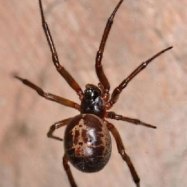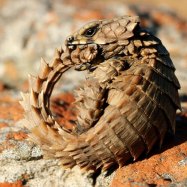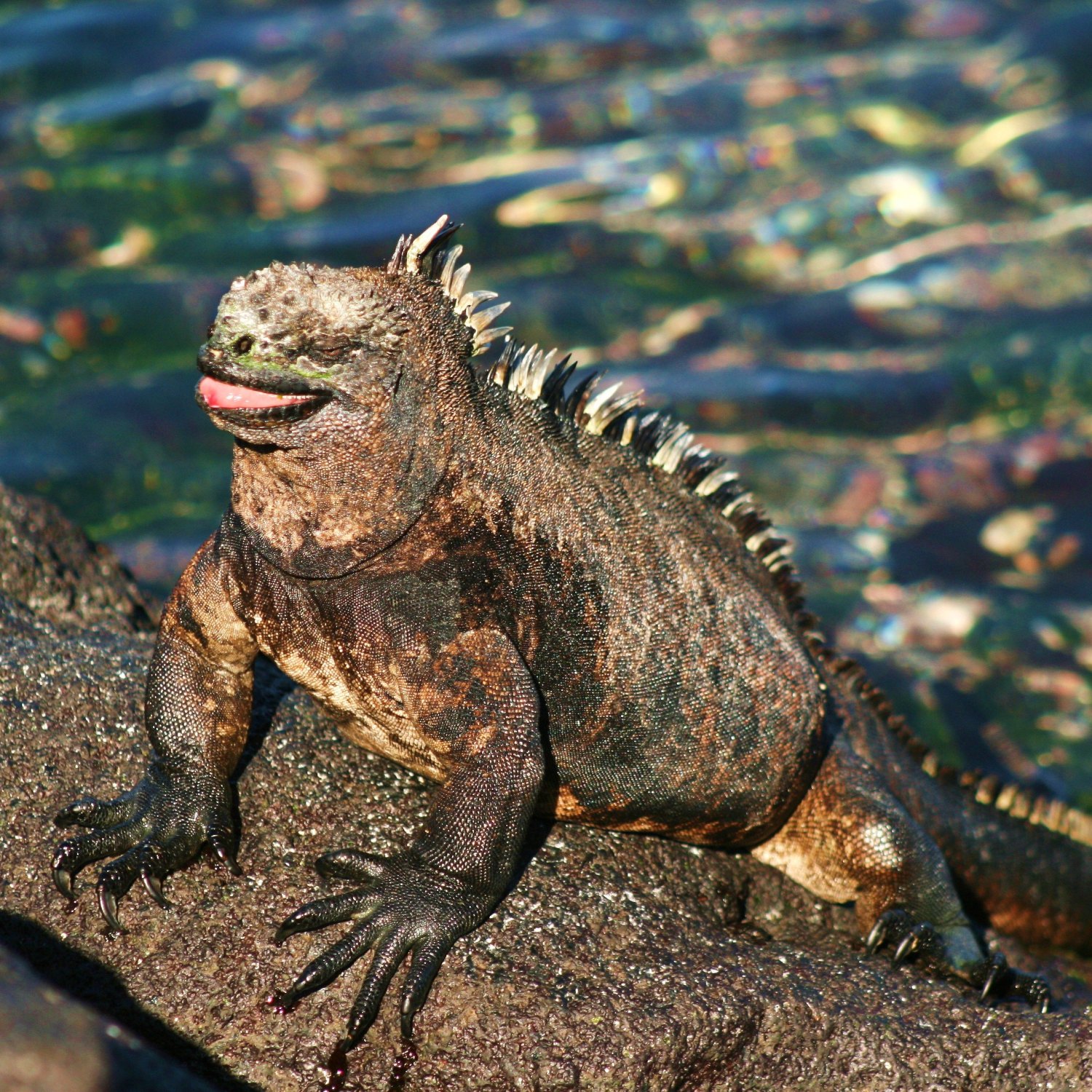
Marine Iguana
1.2 to 1.7 meters
Meet the Marine Iguana, a fascinating creature with a unique appearance and behavior. These lizards, found in coastal areas and rocky shores, can grow up to 1.7 meters long. Belonging to the Iguanidae family, they have a lizard-like body shape and are herbivores. Watch these incredible animals bask in the sun and dive into the ocean for food. #MarineIguana #Lizard #CoastalLife
Animal Details Summary:
Common Name: Marine Iguana
Kingdom: Animalia
Habitat: Galapagos Islands
The Fascinating Marine Iguanas of the Galapagos Islands
Have you ever heard of an iguana that can swim? Yes, you heard it right. The Marine Iguana, also known by its scientific name Amblyrhynchus cristatus, is the only known iguana species that can forage in the ocean. Found only in the Galapagos Islands of Ecuador, these reptiles are a fascinating and unique species that have captured the attention of many researchers and tourists alike.The Marine Iguana is a member of the Animalia kingdom, belonging to the phylum Chordata and the class Reptilia Marine Iguana. They are part of the order Squamata and the family Iguanidae. With their unusual body shape and special adaptations, they have become a symbol of evolution in the Galapagos Islands.
Habitat and Distribution
The Galapagos Islands, located in the Pacific Ocean about 1000 kilometers off the coast of Ecuador, are home to a wide variety of unique and endemic species. Among these, the Marine Iguana is perhaps one of the most striking and iconic ones. These islands have evolved in isolation for millions of years, resulting in a rich diversity of flora and fauna. And the Marine Iguana is no exception.They are found exclusively in the Galapagos Islands, with a distribution restricted to a few islands. These include Fernandina, Isabela, Santa Cruz, and San Cristobal islands. They primarily inhabit coastal areas, where they can bask in the sun and easily access their food sources Moccasin Snake.
Appearance
The Marine Iguana has a unique appearance, with its dark-colored body and scaly skin resembling that of a mythical dragon. They have a flat, broad head, strong jaws, and sharp claws. Their body shape is elongated, and they can grow up to 1.2 to 1.7 meters in length. They also have a long, laterally compressed tail, which helps them swim efficiently in the water.One of the most distinctive features of the Marine Iguana is their coloration. They are usually dark steel grey, black, or brown, which serves as camouflage against the black volcanic rocks found on the islands. This coloration also helps them absorb heat from the sun faster, allowing them to maintain their body temperature and be more active.
Feeding and Adaptations
The Marine Iguana is the only herbivorous marine reptile on the planet. They have specialized adaptations that allow them to forage for algae and other marine plants in the ocean. One such adaptation is their flattened and laterally compressed snout, which helps them graze on algae attached to rocks and in tide pools.Another unique adaptation is the glands behind their eyes, which secrete excess salt absorbed from seawater. This adaptation helps them eliminate excess salt and maintain their osmotic balance, making them well adapted to their marine lifestyle.
Additionally, the Marine Iguana also has sharp, curved claws that allow them to grip onto rocks while foraging in the ocean. They also have powerful muscles in their jaws that enable them to break off pieces of algae from rocks and tear through tough vegetation.
Behavior
The Marine Iguana is a social animal, and they can often be seen in groups basking in the sun or foraging in the ocean. They are diurnal, meaning they are most active during the day and rest at night. During the mating season, which usually occurs from December to March, males can be seen performing territorial displays to attract females.Unlike most reptiles, Marine Iguanas are excellent swimmers and can dive up to 9 meters deep to forage for food. After feeding, they return to land to bask in the sun, often in large groups. This behavior helps them regulate their body temperature, as the ocean can be quite cold for reptiles.
Conservation Status
The Marine Iguana is listed as "Vulnerable" on the IUCN Red List, with a population estimate of about 200,000 individuals. This is mainly due to habitat destruction, predation by introduced species, and human interference. Conservation efforts, such as strict protection of their habitat and successful breeding programs, have helped stabilize their population.Threats and Challenges
One of the biggest threats to the Marine Iguana is the introduction of non-native species to their habitats. Feral cats, dogs, and rats have significantly impacted their populations as they compete for food and even prey on young iguanas. Invasive species also introduce new diseases that can affect the health of the iguanas.Human activities such as tourism and fishing also pose a threat to the Marine Iguana. Boat collisions, pollution, and illegal collection for the illegal pet trade have contributed to their decline. Climate change is also a significant challenge as it affects the ocean's temperature, influencing the availability of food for these reptiles.
Efforts to Protect the Marine Iguana
Despite these threats, several conservation efforts are being made to protect the Marine Iguana and its habitat. The Galapagos National Park, in collaboration with various organizations and research institutions, has implemented measures to reduce the impacts of introduced species and illegal activities.Tourism in the Galapagos Islands is also highly regulated, with strict guidelines in place to ensure the protection of the ecosystem and its inhabitants. Visitors are required to follow designated routes and maintain a safe distance from the iguanas to avoid causing any disturbance or harm.
Furthermore, awareness campaigns and education programs have been conducted to educate the local community and tourists on the importance of protecting these unique creatures and their fragile environment.
Conclusion
The Marine Iguana is more than just a fascinating creature found on the Galapagos Islands; it is a testament to the power of evolution and adaptation. From its unique appearance to its incredible abilities to survive in a harsh marine environment, this species continues to captivate and intrigue scientists and tourists alike.As we continue to learn more about the Marine Iguana and its ecosystem, it is essential to take action to protect them and their habitat. With the right conservation efforts and responsible tourism, we can ensure the continued survival of this remarkable species for generations to come. So, if you ever have the opportunity to visit the Galapagos Islands, be sure to keep an eye out for these captivating creatures and witness their incredible adaptations in person.

Marine Iguana
Animal Details Marine Iguana - Scientific Name: Amblyrhynchus cristatus
- Category: Animals M
- Scientific Name: Amblyrhynchus cristatus
- Common Name: Marine Iguana
- Kingdom: Animalia
- Phylum: Chordata
- Class: Reptilia
- Order: Squamata
- Family: Iguanidae
- Habitat: Galapagos Islands
- Feeding Method: Herbivorous
- Geographical Distribution: Galapagos Islands
- Country of Origin: Ecuador
- Location: Coastal areas, rocky shores
- Animal Coloration: Black, gray, brown
- Body Shape: Lizard-like
- Length: 1.2 to 1.7 meters
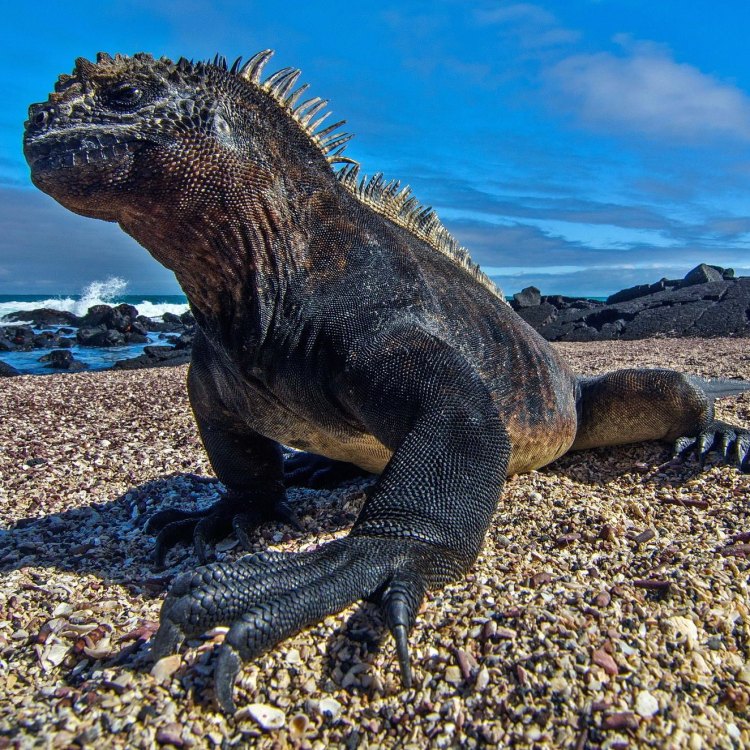
Marine Iguana
- Adult Size: Medium
- Average Lifespan: Up to 60 years
- Reproduction: Oviparous
- Reproductive Behavior: Mating occurs in the water
- Sound or Call: Noisily exhales and sprays salt water
- Migration Pattern: Non-migratory
- Social Groups: Colonies
- Behavior: Basking in the sun, diving for food
- Threats: Introduced predators, climate change
- Conservation Status: Vulnerable
- Impact on Ecosystem: Important for maintaining marine algae
- Human Use: Tourist attraction
- Distinctive Features: Salt-excreting glands, flattened tail
- Interesting Facts: Only marine lizard in the world
- Predator: Galapagos hawk, Galapagos snake, feral cats
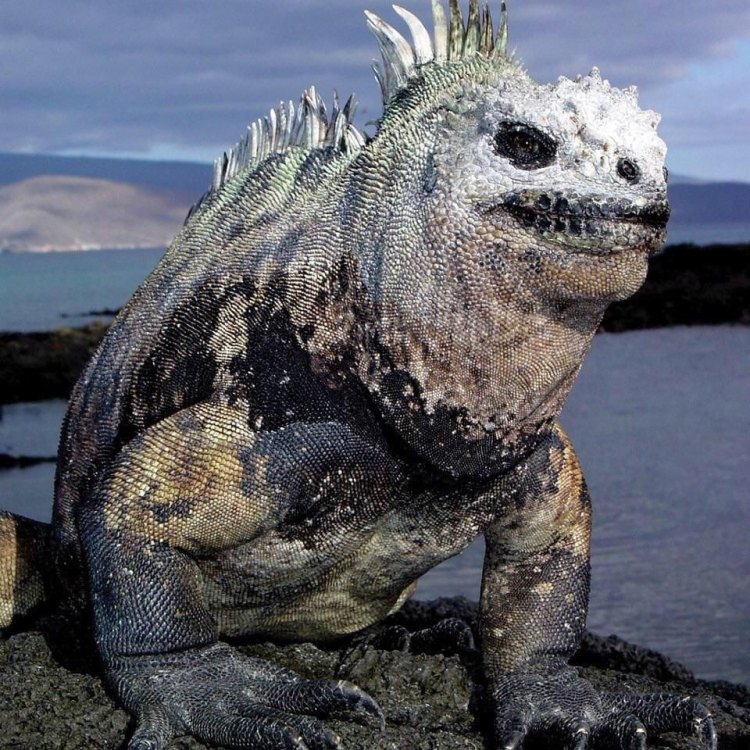
Amblyrhynchus cristatus
The Unique and Fascinating Marine Iguana: A Creature of the Galapagos Islands
When one thinks of the Galapagos Islands, images of giant tortoises and colorful finches often come to mind. However, there is also a lesser-known creature that inhabits these islands, and it is none other than the marine iguana. This remarkable creature is the only marine lizard in the world, making it a truly unique and remarkable species.From its distinctive features to its crucial role in the ecosystem, the marine iguana is a fascinating creature that deserves to be explored and appreciated PeaceOfAnimals.Com.
Appearance and Behavior
The marine iguana is often described as an awkward-looking creature, with its spiky head, long tail, and dark grey or black coloration. Adult male marine iguanas can reach a medium size of up to 3 feet, while females can grow up to 2 feet in length. They are also known for their flattened tails, which they use to swim and dive in the ocean.But don't let their awkward appearance fool you, these reptiles are excellent swimmers and divers, with the ability to hold their breath for up to 30 minutes. They are often seen basking in the sun on the shores of the Galapagos Islands, but they spend the majority of their time in the ocean, diving up to 30 feet in search of their favorite food – marine algae.
Reproduction for the marine iguana is a unique and interesting process. These reptiles are oviparous, which means they lay eggs, and their mating occurs in the water. Male marine iguanas attract females by displaying their unique coloration and posture, and once a female is chosen, they will mate in the water where the female will later lay her eggs on the shore.
Sounds and Interaction with Other Species
Unlike other reptiles, the marine iguana does not make any vocalizations Madagascar Tree Boa. However, they have a distinct way of communicating with each other - through the use of saltwater. Due to their diet of marine algae, marine iguanas have evolved specialized salt-excreting glands, located near their nostrils. When these reptiles are basking in the sun, they often sneeze out the excess salt, making a characteristic noise that can be heard from a distance. This behavior also serves as a way to get rid of excess salt accumulated in their bodies, keeping them healthy and hydrated.The marine iguana shares its habitat with various other species on the Galapagos Islands, such as giant tortoises, Galapagos snakes, and feral cats. While the marine iguana does not have any natural predators, they do face threats from introduced predators, such as feral cats and rats, which prey on their eggs and young.
One of the most significant interactions with other species occurs between the marine iguana and the Galapagos hawk. These birds of prey are the primary predator of marine iguanas and can target them during mating season when the males are distracted and vulnerable. This interaction is crucial to the survival of both species, as the hawks feed on the marine iguanas and help control their population, while the loss of a large number of marine iguanas can have a significant impact on the hawk's food supply.
Migratory Patterns and Social Behavior
Unlike other island inhabitants, the marine iguana is a non-migratory species, meaning they do not travel to other islands. They can, however, be seen swimming long distances between rocks and islands within their habitat.These reptiles also display a unique social behavior, as they form colonies of hundreds or even thousands of individuals. Within these colonies, there is a distinct social hierarchy, with dominant males at the top, and the smaller males at the bottom. However, they do not engage in aggressive behavior, and they can often be seen basking together in large groups.
Threats and Conservation Status
As the only marine lizard in the world, the marine iguana is a crucial species in the Galapagos ecosystem. They play a vital role in maintaining the balance in the marine algae population, which is essential for the health of other marine species. However, like most creatures on the Galapagos Islands, the marine iguana is facing threats from human activities and environmental changes.The introduction of non-native predators, such as feral cats and rats, have had a devastating impact on the marine iguana population. Their eggs and young are vulnerable to these predators, leading to a decline in their numbers. Additionally, climate change is also a significant threat, as it alters the ocean's temperature, affecting the marine algae, which is the main food source for these reptiles.
Due to these threats, the marine iguana is classified as a vulnerable species on the IUCN Red List. Conservation efforts are underway to protect the marine iguana, including the removal of invasive predators, monitoring and tracking of their population, and educating tourists on responsible behavior when visiting their habitats.
The Human Connection
The Galapagos Islands attract thousands of tourists every year, and one of the main attractions is the marine iguana. These curious creatures have become accustomed to human presence and have become an essential part of the tourism industry on the islands. However, it is crucial for visitors to be mindful of their impact on the marine iguana's habitat and follow responsible tourism practices to avoid disturbing their natural behavior.Moreover, the marine iguana also serves as a crucial indicator species for the health of the Galapagos ecosystem. As a keystone species, their presence is vital for the survival of other species in their habitat. Therefore, protecting the marine iguana is not just essential for its survival, but also for the overall health of the Galapagos Islands.
Fascinating Facts about the Marine Iguana
Aside from its unique features and role in the ecosystem, the marine iguana also has some other interesting facts worth mentioning. Here are a few additional tidbits about this remarkable creature:- The marine iguana is the only known reptile that can forage in the ocean.
- They can shrink and regrow their skeleton, allowing them to become more compact and swim faster in the water.
- The marine iguana's distinct coloration and spiky head serve as a defense mechanism, making them less appealing to predators.
- The Galapagos Islands are the only place in the world where you can find the marine iguana.
- They can live up to 60 years, making them one of the longest-living lizards in the world.
Conclusion
In a world full of unique and fascinating creatures, the marine iguana stands out as one of the most unusual and interesting. From its aquatic lifestyle to its importance in the Galapagos ecosystem, these reptiles are a crucial part of our planet's biodiversity.However, like many other species, the marine iguana is facing threats that put its survival at risk. As humans, it is our responsibility to protect and preserve these remarkable creatures and their habitat. Through conservation efforts, responsible tourism, and raising awareness, we can ensure that future generations can witness the beauty and uniqueness of the marine iguana. So, the next time you visit the Galapagos Islands, be sure to look out for these remarkable creatures and appreciate their presence on our planet.
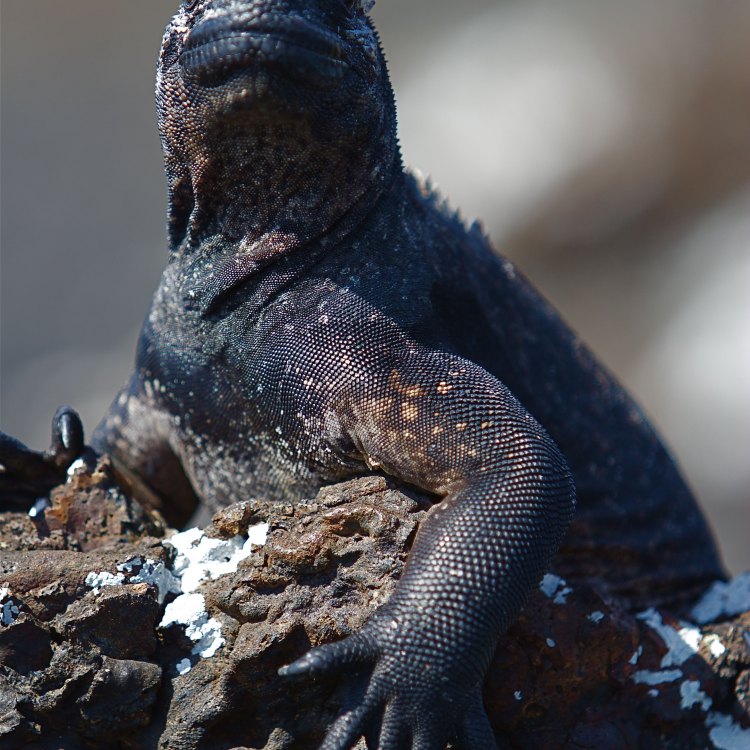
The Fascinating Marine Iguanas of the Galapagos Islands
Disclaimer: The content provided is for informational purposes only. We cannot guarantee the accuracy of the information on this page 100%. All information provided here may change without prior notice.

